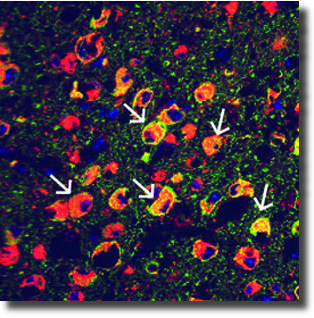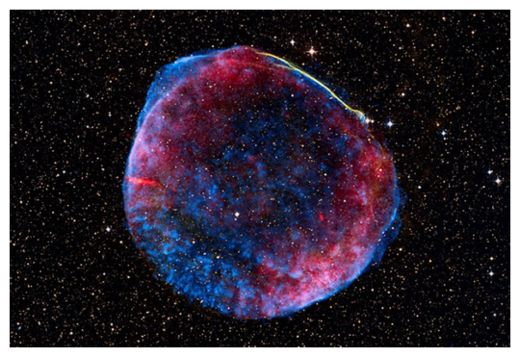
© Hyelim ChoThe white arrows highlight infected cells in a mouse brain. Scientists at Washington University School of Medicine in St. Louis have discovered that genetic programming makes some brain cells more resistant to infection.
Viruses often spread through the brain in patchwork patterns, infecting some cells but missing others. New research at
Washington University School of Medicine in St. Louis helps explain why. The scientists showed that natural immune defenses that resist viral infection are turned on in some brain cells but switched off in others.
"The cells that a pathogen infects can be a major determinant of the seriousness of brain infections," says senior author Michael Diamond, MD, PhD, professor of medicine. "To understand the basis of disease, it is important to understand which brain regions are more susceptible and why."
While some brain infections are caused by bacteria, fungi or parasites, often the cause is a virus, such as West Nile virus, herpesvirus or enteroviruses.
For their study, now available online in
Nature Medicine, the researchers focused on granule cell neurons, a cell type that rarely becomes infected. They compared gene profiles in granule cells from the cerebellum with the activity in cortical neurons in the cerebral cortex, which are more vulnerable to infection.
The comparison revealed many differences, including a number of genes in cortical neurons that were less well-expressed - meaning that for those specific genes there were fewer copies of mRNA, the molecules that relay genetic information from DNA to the cell's protein-making mechanisms.



Comment: It's interesting that they don't even entertain the possibility that a space rock might have collided with the Russian satellite, especially since they state that "the predicted distance would seem to preclude a collision". Given that fireballs are currently raining down on our planet and given that the International Space Station was hit by a small space rock last year, shouldn't cometary debris at least be on their radar of possible explanations for what happened to these satellites?